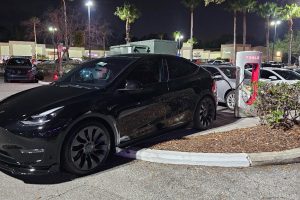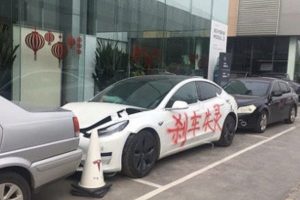Managing a fleet has never been easy. The successful fleet manager must have the administrative and asset management skills to optimize the fleet vehicles – plus, the management skills to handle a diverse team of drivers. Add to those requirements the ability to adapt to a rapidly changing technological and economic environment (case in point: as with Electric Vehicles), and you’ve got a role that’s a challenge for even the best to pull off successfully.
Maneuvering the Curve in the Road Ahead
Fairly quickly, electric vehicles (EV) has taken center stage. On the surface, it might seem that converting a fleet to EVs would be business as usual. But with electricity replacing gasoline, there is a new set of needs for the fleet manager and the driver that need to be addressed – not the least of which involve finding and navigating a network of charging stations, and rethinking how payments for fleet energy will be handled.
The challenge of learning about and adjusting to the variety of options for EV charging is a major change for fleets, and particularly so when it comes to home charging. Reports show that 88% of EV owners charge their vehicle at home “often” or “always”1. Employees charging their company vehicles at home is a major convenience for both the employee and the company, and often proves to be a money saver when compared to public charging options. Given the popularity and convenience of home charging, businesses that have employees take their vehicles home need to ready for this major change in how vehicles get their fuel — or alternative fuel in this case. If employees are charging at home, the only receipt they get is from their power bill, and that doesn’t break out charging costs from the rest of their electric use. The cost of charging also varies by time of day in many markets, and the price per kilowatt hour (kwh) can vary depending on how much electricity their home uses in a month.
“One of the two impediments to full adoption of electric fleets is the need for clear and convenient employee reimbursement solutions where home charging is concerned,” notes John Donahue, VP Product Innovation at FLEETCOR®. “At FLEETCOR we recognize that the transition to EV will be gradual, and that we need to smooth the way for fleets to make the journey and help them navigate the new alternative fuel landscape. Our core capabilities of enabling payments, fraud controls, data insights, and cost savings are just as relevant in the EV world as they are in fossil fuels.”
The variety of charging options, from at home charging to DC Fast public charging, is a major consideration for businesses that are looking to add EVs to their fleets. Both Comdata® and Fuelman® have solutions for these needs. All of their Mastercard solutions are EV-enabled and, whether virtual or physical, can be used for payment in popular EV charging apps within any charging network where Mastercard is accepted. By using connected vehicle technology, fleets can keep track of not only where and when charging events occur, but also how much energy was charged (kWh) and where and when the charging took place. Further, the Comdata and Fuelman solution calculates the cost of the electricity for each private charge event using data directly from the vehicle –meaning the employee doesn’t have to track or submit anything. This means your company’s vehicles sit safely in company lots or at employees’ homes charging at night, and you pay for exactly what was spent charging the vehicle. “The vehicle itself becomes the ultimate source of truth,” notes Donahue.
Taking Fleet Management to the Next Level: More Advantages Of Connected EVs
Connected fleet EVs give several other key advantages.
In addition to facilitating payments and reimbursements, connected fleet EVs provide fleet managers the opportunity to glean rich data and leverage robust analysis tools that can help them assess the value of EV fleets and plot a conversion strategy. EV manufacturers, fleet experts, and others can give you advice, but only connected vehicles can give you personalized data that applies to your company or government fleet.
Once you understand how connected vehicles can support your sustainability journey, you’ll soon see how conversion to a connected EV fleet begins to make sense on many levels.
This article is supported by FleetCor, Comdata, and Fuelman.





